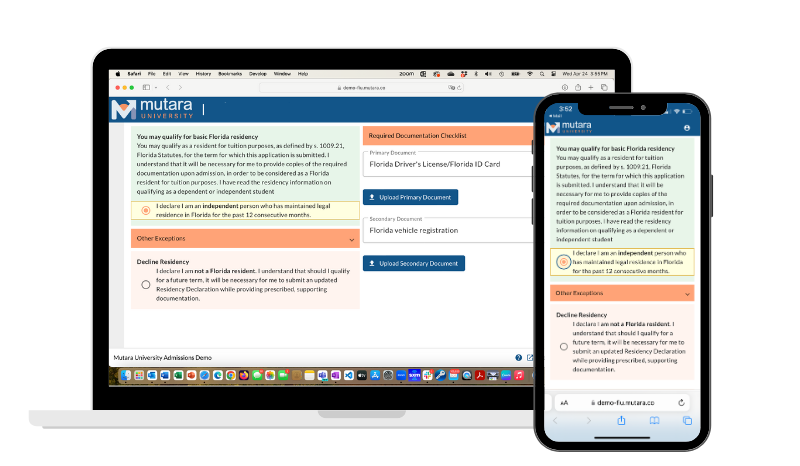Admitting the Ideal Student: Responsible, Resilient, and Resourceful
It’s not an easy question to answer. There are many factors involved in making sound admissions decisions. It’s crucially important to get it right because it affects every aspect of the institution.
Admitting the right set of students involves two key processes that need to be performed in conjunction with each other:
- Engaging the prospective student to apply and/or accept an offer to attend
- Evaluating which applicants to admit
Engaging and nurturing prospective students through the enrollment funnel is unique to each institution. Yet, it always involves standard marketing practices including hosting a series of events, sending targeted email campaigns and creating meaningful content. This blog post will focus on how evaluating candidates affects an institution’s ability to matriculate the ideal set of students – which ultimately leads to achieving university-wide goals including improved student success outcomes.
Focus on Student Success
In its simplest form, the business of colleges and universities is to prepare students to be motivated and thoughtful contributors to society. Historically, this was measured purely by the reputation, skills, and accomplishments of the institution’s alumni. At times, this was accomplished by weeding out underperforming students to create a stronger graduating class.
Today, we know that college persistence and retention is a key indicator in predicting student success. Even today, as institutions implement programs to improve student success, 4 in 10 students admitted to 4-year institutions don’t graduate within 6 years.
As college tuition has skyrocketed, institutions are beginning to be measured on the impact of student debt and wasted financial aid dollars due to students dropping out. The association of Public and Land Grant Universities recently kicked off The College Completion Project. This project highlights a major component of increasing student success — ensuring that an institution admits students who are going to be successful at that university and that those students are supported during their transition into college life.
Developing a Responsible, Resilient, and Resourceful Student Body
As mentioned, student success begins with attracting and enrolling right students to a given university and then nurturing them throughout the higher education lifecycle. At its most basic form, this means determining whether the potential student is:
- Responsible enough to manage his/her time and priorities on his/her own.
- Resilient enough to move past inevitable setbacks in his/her academic, social, or financial situation
- Resourceful enough to develop and implement strategies to overcome the challenges that are presented to him/her
This is where holistic review comes into play; conducting a comprehensive evaluation of students including attributes that provide a better picture of their ability to thrive. When done properly, holistic review also assists the institution to identify at risk students whose success is dependent upon support from the institution and aids the implementation of processes to help them.
Holistic Review Adoption
Although many institutions are starting to adopt a more well-rounded review of applications, the current standard is to evaluate applications based on GPA and standardized test scores first. Quite often when implemented, holistic review is performed weeks after the initial admissions decisions are made.
At many institutions, the depth of review is driven by the sheer volume of applications that need to be processed. For example, last year UC Berkeley processed over 85,000 applications in 4 months for its freshman class of 15,500. That averaged to almost 1,000 applications a day! Assuming that the university only spent 15 minutes of total effort to review each application, 31 fully dedicated individuals would be required to meet that demand.
With the technology available to higher education institutions today, holistic review is just too labor intensive to be the primary means in which admissions decisions are made. Evaluating decisions based on GPA and test scores allows larger volumes of applications to be processed by fewer people in a shorter period. This means that a more realistic picture of student success is missed.


